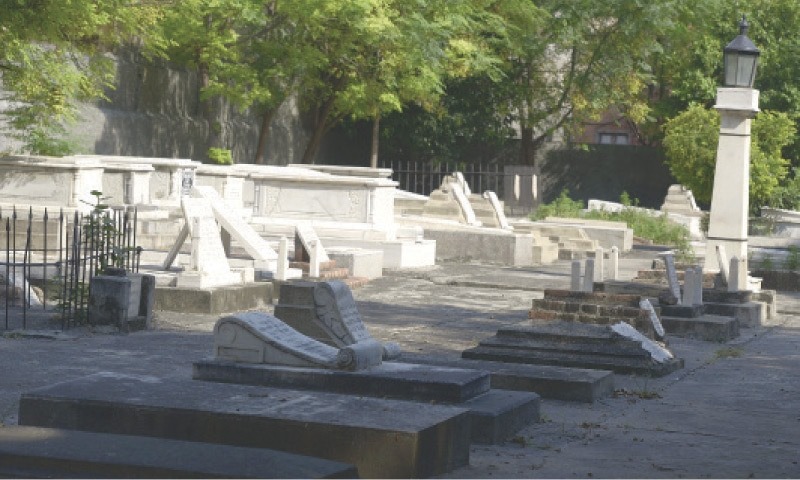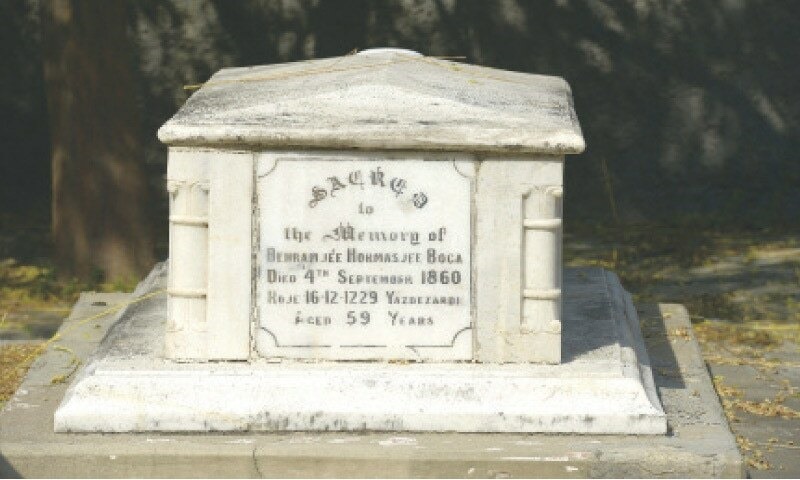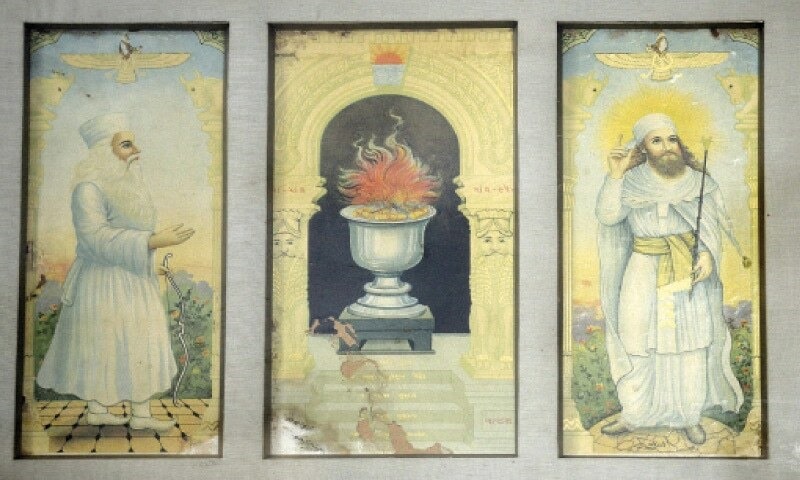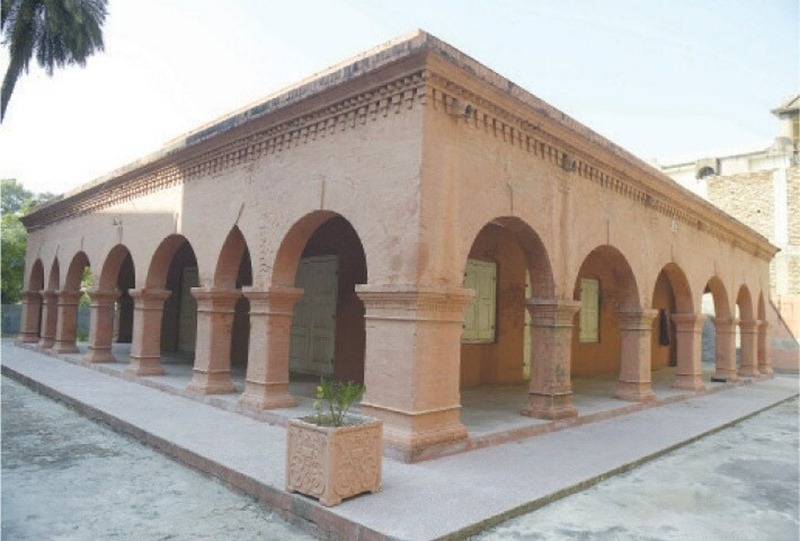During the British rule, Rawalpindi was home to people from various religions. There were Sikhs, Muslims, Hindus, Christians and even Zoroastrians. However, many left the city but their identity marks can still be seen in the shape of their worship places and other sites.
One such site is that of the Zoroastrians, commonly known as Parsis. It is a cemetery, which the Parsis of the garrison city built over 130 years ago along Murree Road.
Article by Aamir Yasin | The Dawn
View of the cemetery of the Parsis situated behind Jewellers Market along Murree Road.
Though it is well kept, it still requires preservation by the archaeology department.
According to unofficial data, the total population of Parsis in Rawalpindi before the partition of the Indian subcontinent was over 300, however, today it has reduced to just seven families.
Most of them left for Mumbai after 1947. However, one prominent family remains in the city today and it is the Bhandaras – the owners of Murree Brewery.
Another prominent Parsi from Rawalpindi was Fakirji Dhanji Bhouy, who earned the title of Khan Bahadur in 1895. He established the first public library of Rawalpindi on Massy Gate in Saddar, which was named after the first commissioner of Rawalpindi.
The Dhanji Bhouy Jain Public Library was located on the upper floor of Massy Gate on Adamjee Road. It was a unique library and jointly established by a Christian, Parsi and a Jain.
The earliest grave is of Behramjee Hormasjee Boca who died in 1860.
Later in the 1960s, Massy Gate was razed for widening the road, but the area in Saddar is still known by this name.
The second prominent personality was Peshotan Dhanji Bhouy Bhandara who bought Murree Brewery in 1947.
He was the father of the famous writer, Bapsi Sidhwa, and former MNA Minocher Peshotan Bhandara and grandfather of MNA Isphanyar Bhandara.
The Parsis’ cemetery is located behind the Jewellers Market on Murree Road surrounded by highrise buildings.
Its main gate becomes visible only when one enters through it.
The building and cemetery tell stories of the past when the community thrived in the city.
Pictures of the founder of Zoroastrianism, Zarathustra, as well as symbols of the Zoroastrian faith adorn a wall.
The graveyard and prayer hall was established by Seth Jehangir Ji Fram JI Jussawalla and Seth Jamasji Hormasji Bogha in memory of their grandfathers Seth Dorabji Cowasji Jussawalla and Seth Nasarwanji Jehangirji Bogha in January 1898. Both were Parsi merchants of Rawalpindi. This was inscribed in the marble stone installed along the gate of the cemetery.
Now, the graveyard is being managed by MNA Isphanyar Bhandara who has deployed a watchman and a gardener to manage it. There are more than 100 graves in the cemetery, with the oldest dating back to 1860.
Before 1898, the area had few graves and in 1898 Parsis of Rawalpindi decided to allocate a space for the graveyard and founded the cemetery.
The cemetery houses a prayer hall where final rituals are performed for the dead person. Like Anglo-Roman style, the building is surrounded by arches and has two main halls and a washroom to clean corpses.
This building houses prayer halls where the final rituals of the deceased are performed. — Photos by Mohammad Asim
An old well is also in the building for water requirements. The building and cemetery is well maintained and palm and date trees as well as wildflowers give clean, neat look.
The main halls of the building are adorned with pictures of the founder of Zoroastrianism, Zarathustra, and the Faravahar – the ancient symbol of the Zoroastrian faith. It depicts a bearded man and stands above a pair of wings.
There are few plaques inscribed in Gujarati language which was known as the language of Parsis in the Indian subcontinent before the partition of 1947.
The watchman who hails from Murree said he had been working at the cemetery for the last 11 years.
He said his duty was to maintain the building and graveyard. “Isphanyar Bhandaravisits the cemetery and inspects things here,” he added.
PML-N MNA Isphanyar Bhandara said the cemetery was shrinking and was in danger of land grabbing. He said he was trying to save the site as it was the only cemetery of the Parsis in the city.
Published in Dawn, October 7th, 2024




